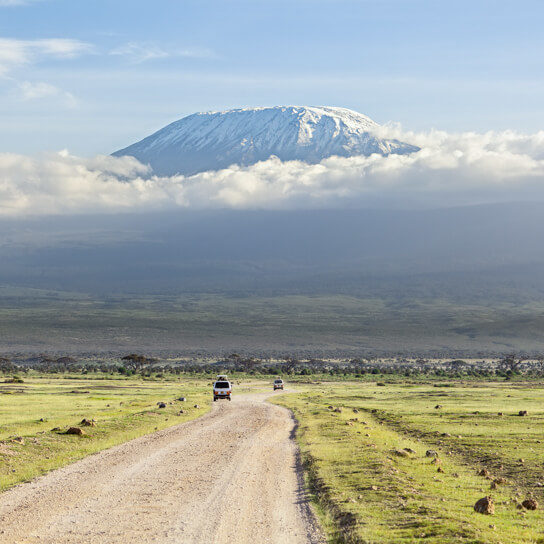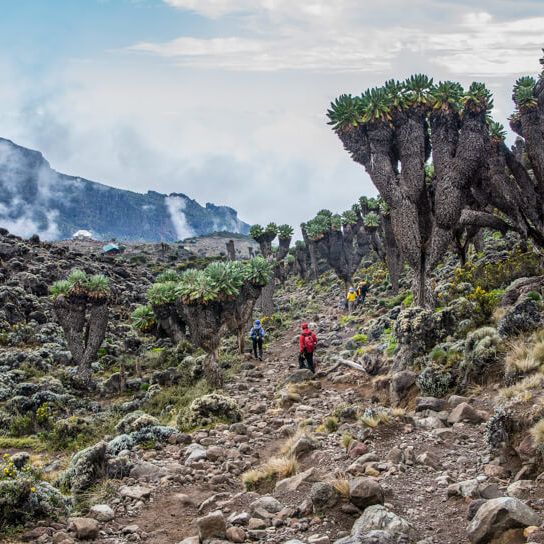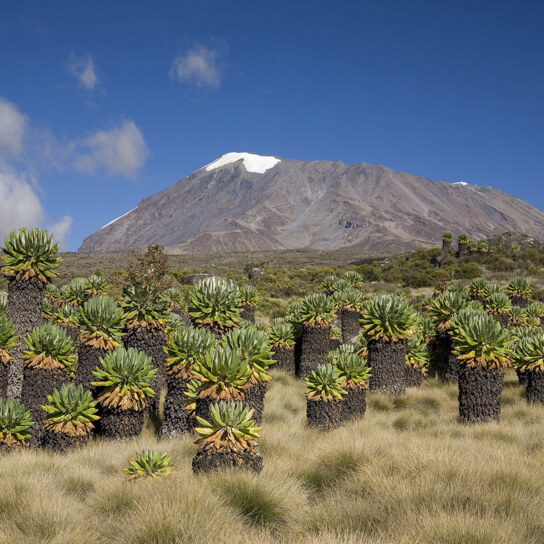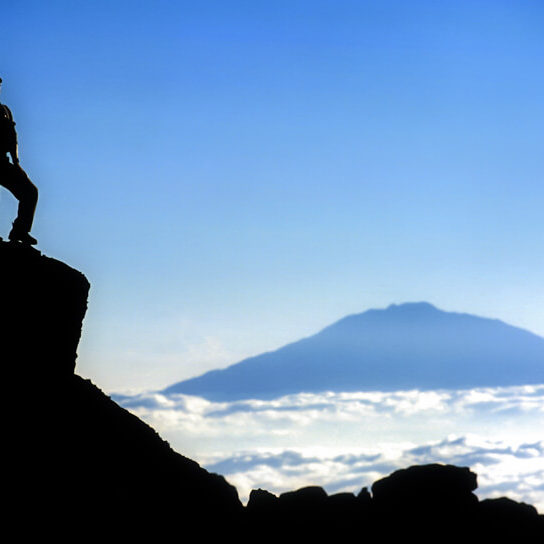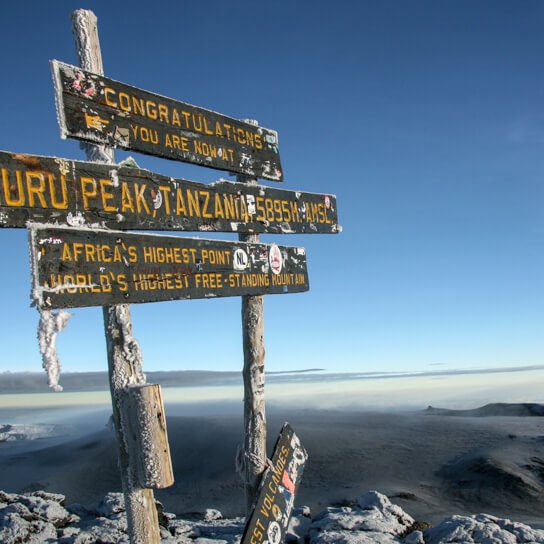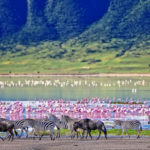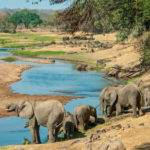Close to the northern city of Arusha is the majestic snow-capped Mt. Kilimanjaro, the ‘shining mountain’. Not only is it the highest mountain in Africa, it is also the highest freestanding peak in the world, rising in breathtaking isolation from the surrounding coastal scrubland and topped by one fifth of all the ice in Africa.
Kilimanjaro is one of the world’s most accessible high summits, a beacon for visitors from around the world. Reaching the summit lies within the range of anyone who is reasonably fit, and the ascent is made by trekking rather than by climbing. Most climbers succeed with little more than a walking stick, proper clothing and determination!
But there is so much more to Kili than her summit. Even before you cross the national park boundary, the cultivated footslopes give way to lush montane forest, inhabited by elusive elephant, leopard, buffalo, the endangered Abbot’s duiker, and other small antelope and primates. Higher still lies the moorland zone, where a cover of giant heather is studded with otherworldly giant lobelias. Above 4,000m, a surreal alpine desert supports little life other than a few hardy mosses and lichen. Then, finally, the last vestigial vegetation gives way to a winter wonderland of ice and snow – and the magnificent beauty of the roof of the continent.
Kilimanjaro is one of the world’s most accessible high summits, a beacon for visitors from around the world. Reaching the summit lies within the range of anyone who is reasonably fit, and the ascent is made by trekking rather than by climbing. Most climbers succeed with little more than a walking stick, proper clothing and determination!
But there is so much more to Kili than her summit. Even before you cross the national park boundary, the cultivated footslopes give way to lush montane forest, inhabited by elusive elephant, leopard, buffalo, the endangered Abbot’s duiker, and other small antelope and primates. Higher still lies the moorland zone, where a cover of giant heather is studded with otherworldly giant lobelias. Above 4,000m, a surreal alpine desert supports little life other than a few hardy mosses and lichen. Then, finally, the last vestigial vegetation gives way to a winter wonderland of ice and snow – and the magnificent beauty of the roof of the continent.
